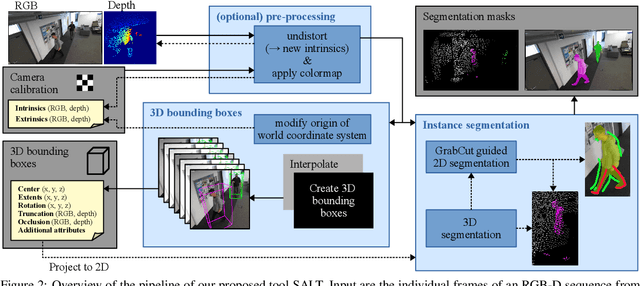Stephan Krauß
Towards Unconstrained 2D Pose Estimation of the Human Spine
Apr 10, 2025Abstract:We present SpineTrack, the first comprehensive dataset for 2D spine pose estimation in unconstrained settings, addressing a crucial need in sports analytics, healthcare, and realistic animation. Existing pose datasets often simplify the spine to a single rigid segment, overlooking the nuanced articulation required for accurate motion analysis. In contrast, SpineTrack annotates nine detailed spinal keypoints across two complementary subsets: a synthetic set comprising 25k annotations created using Unreal Engine with biomechanical alignment through OpenSim, and a real-world set comprising over 33k annotations curated via an active learning pipeline that iteratively refines automated annotations with human feedback. This integrated approach ensures anatomically consistent labels at scale, even for challenging, in-the-wild images. We further introduce SpinePose, extending state-of-the-art body pose estimators using knowledge distillation and an anatomical regularization strategy to jointly predict body and spine keypoints. Our experiments in both general and sports-specific contexts validate the effectiveness of SpineTrack for precise spine pose estimation, establishing a robust foundation for future research in advanced biomechanical analysis and 3D spine reconstruction in the wild.
SALT: A Semi-automatic Labeling Tool for RGB-D Video Sequences
Feb 22, 2021



Abstract:Large labeled data sets are one of the essential basics of modern deep learning techniques. Therefore, there is an increasing need for tools that allow to label large amounts of data as intuitively as possible. In this paper, we introduce SALT, a tool to semi-automatically annotate RGB-D video sequences to generate 3D bounding boxes for full six Degrees of Freedom (DoF) object poses, as well as pixel-level instance segmentation masks for both RGB and depth. Besides bounding box propagation through various interpolation techniques, as well as algorithmically guided instance segmentation, our pipeline also provides built-in pre-processing functionalities to facilitate the data set creation process. By making full use of SALT, annotation time can be reduced by a factor of up to 33.95 for bounding box creation and 8.55 for RGB segmentation without compromising the quality of the automatically generated ground truth.
* VISAPP 2021 full paper (9 pages, 6 figures), published by SciTePress: https://www.scitepress.org/PublicationsDetail.aspx?ID=ywQZ3GZrka8=&t=1
 Add to Chrome
Add to Chrome Add to Firefox
Add to Firefox Add to Edge
Add to Edge